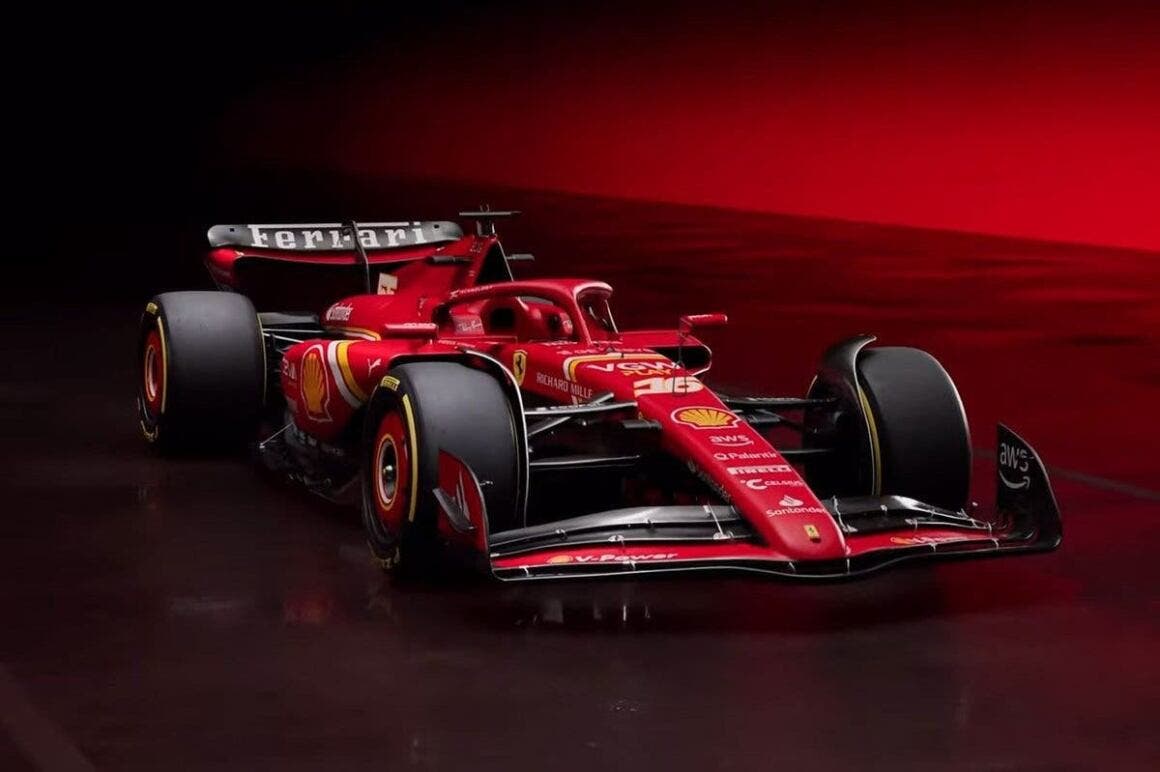The new technical management entrusted to Frederic Vasseur, starting from last year, sees the new Ferrari SF-24, unveiled today at noon by the Prancing Horse team, as the first single-seater born out of this change in mindset and personnel initiated in 2023. The Ferrari SF-24 is also the 70th single-seater from the Prancing Horse, carrying the renewed ambitions of victory that have perhaps been renewed too many times over the years.
However, there is a different awareness this year, that of starting without too much fanfare and relying on substantial situations to, probably, move from words to actions differently. Beneath these realizations, however, lies the ever-present need to challenge the formidable performances of Max Verstappen‘s Red Bull; the absolute reference in the Circus, powered by a new RB20 that seems to be born under a lucky star once again. There is also an additional task that this new Ferrari SF-24 knows it must shoulder; that of maintaining its qualities virtually intact, without significant improvements, also for the next season in light of the allocation of funds towards the single-seater that we will see from 2026 when Formula 1 will undergo another regulatory change.
The SF-24 introduces a thoughtfully designed and conceived single-seater, starting from a blank slate. The focus has been on setting aside the concepts that the Prancing Horse relied on during the previous two seasons, looking at a single-seater capable of overcoming the flaws identified in last year’s SF-23. At the heart of this necessary shift is technical director Enrico Cardile and his entire team, who have been able to work on the project without any constraints. After all, it was necessary to “overcome the development limitations we encountered with the SF-23,” Cardile admitted.
For the new Ferrari SF-24, the approach was different, looking at an entirely new project
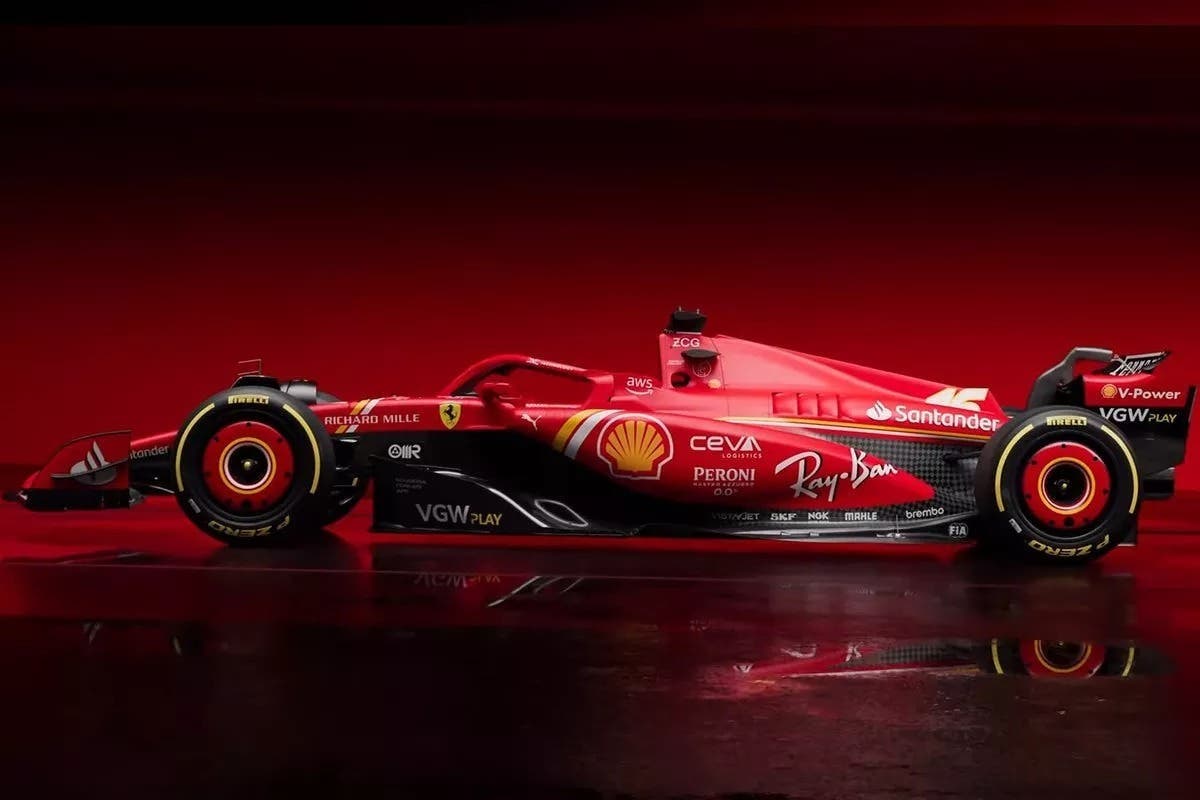
At the heart of the new Ferrari SF-24 is therefore a concept that changes face compared to the previous two years, focusing on revised aerodynamic management. It is important to remember that last year’s SF-23 was plagued by numerous aerodynamic issues, often making it unpredictable in its response to the drivers. This resulted in a chronic lack of performance leading to excessive tire degradation. Conditions that the team tried to mitigate by acting on the floor and bargeboards with a significant update seen from Barcelona; an update that still represented a modest starting point for the new SF-24 project.
While the cockpit positioning itself has not changed, the chassis has been extended by about 5 centimeters while being lighter than that used by last year’s SF-23. The engine and gearbox are therefore positioned further back to seek better mass balance and overall vehicle body balance. However, the single triangular airbox remains representative of the mass radiator layout that was previously adopted, namely, their placement in the bargeboards; this allowed for a slimmer engine cover while maintaining more substantial bargeboards in terms of volume.
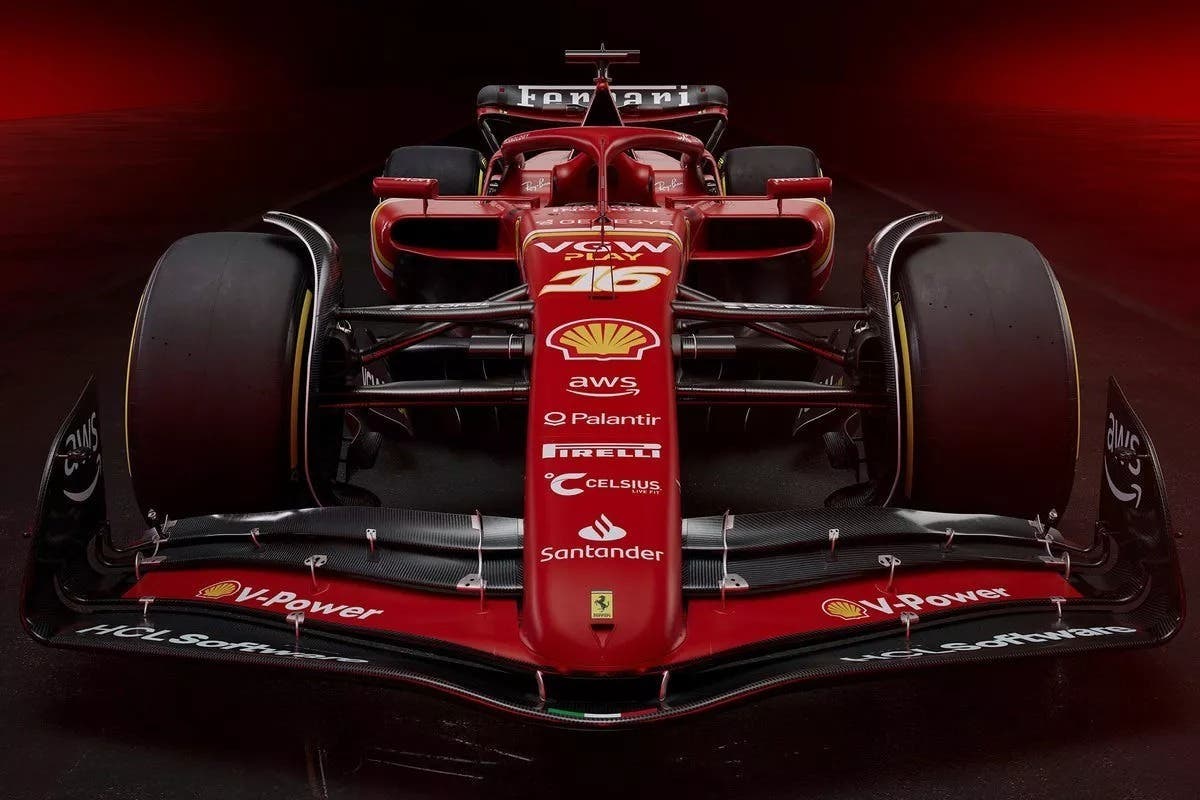
The new internal layout and the relocation of the crash cones have further implemented the concept of a descending bargeboard now prevalent among the Circus’s single-seaters. This way, the airflow gets a better setup when reaching the rear section, enhancing the work already done by the diffuser.
The front part of the section below the bargeboards now features a more substantial flare but also has a channel, placed below them, less pronounced. Overall, the trajectory of the new Ferrari SF-24’s bargeboards appears more descending towards the gearbox area, also presenting a larger scoop now more similar to that seen especially on the Aston Martins.
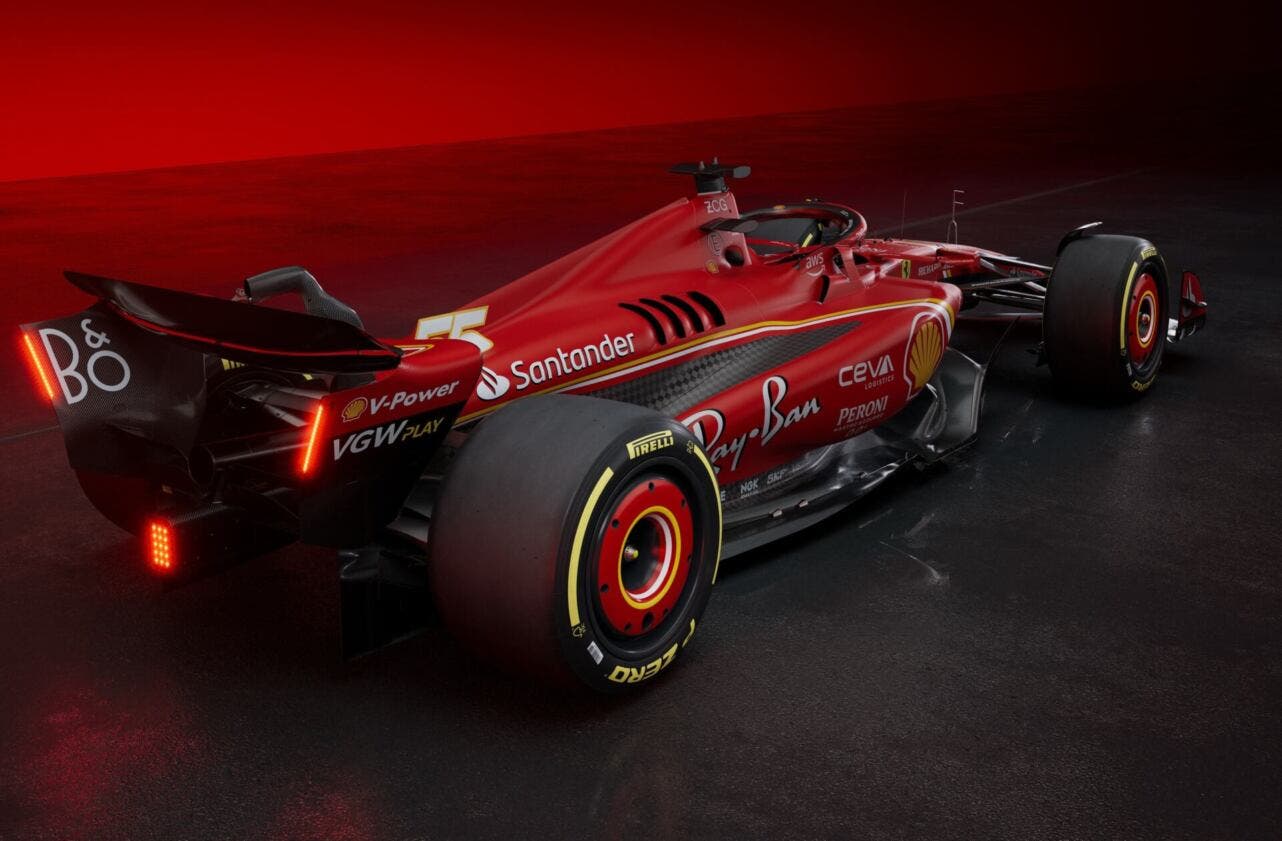
The air intake mouths inside the bargeboards, however, feature a large “tray” inspired by Red Bull. At the base of the engine cover, there is a stepped area that we see for the first time on the Ferrari SF-24, and with four vent openings, it allows separating the hot flow exiting from the engine area from that acting on the bargeboards. The concept of the By-Pass Duct, also seen last year, captures the airflows under the intake mouths of the bargeboards, on the sides of the cockpit, to transfer the energized flow to the upper part. Probably ensuring better functioning of this system is an air passage created in the rear attachments of the Halo.
Looking at the new Ferrari SF-24 from the front, the new project management of the nose is noticeable. The attachment on the second profile of the front wing remains, but its shape is now less tapered compared to what was seen on the previous SF-23. The front wing seen at the presentation seems to look towards a different configuration than last year, while the flow diverters present last year between the last two profiles of the wing are now replaced by two more traditional supports.
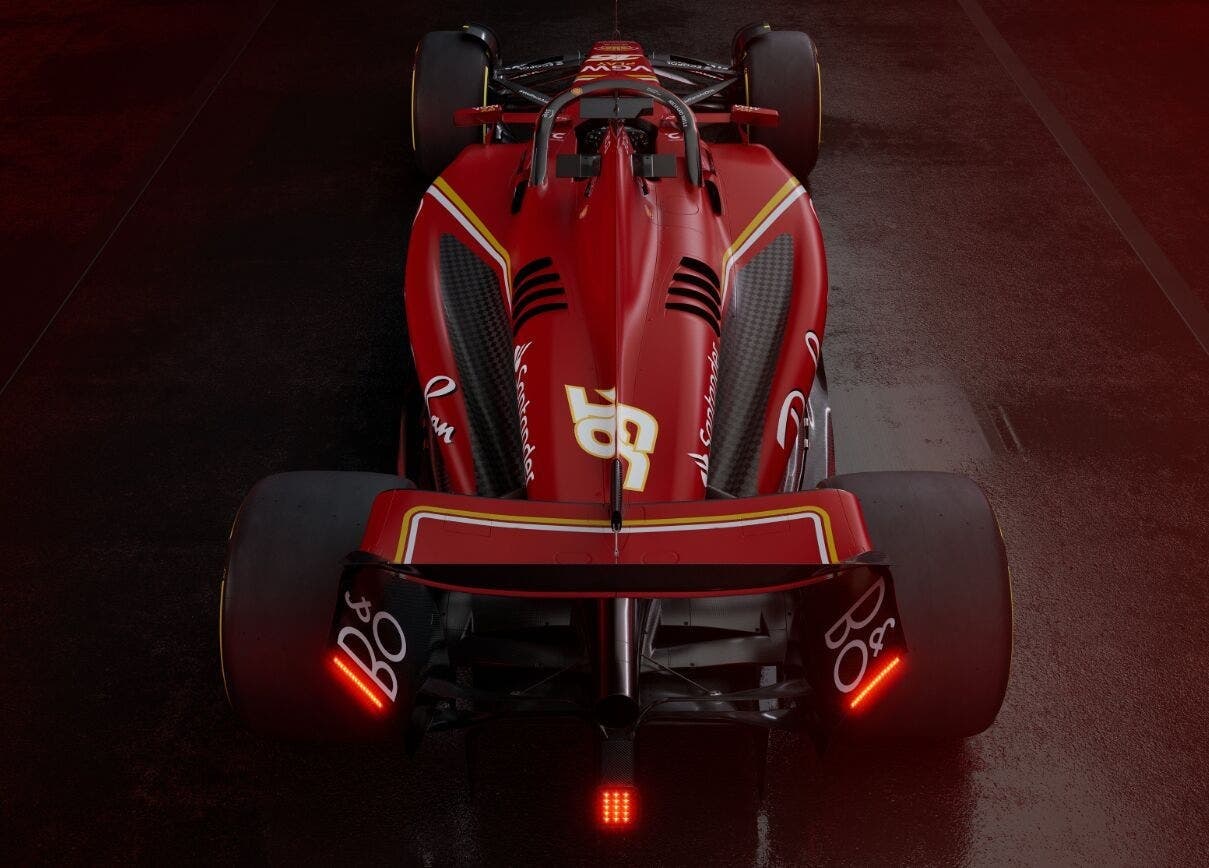
In terms of suspensions, all the mechanisms that constitute the suspension elements at the front and rear appear further optimized. In any case, this year again, the push-rod scheme is used at the front, with the upper triangle arms now more staggered compared to what was seen on the SF-23 last year; a necessary scheme to mitigate pitching as much as possible.
While many expected variations on the rear axle, the Ferrari SF-24 maintains the tried and tested pull-rod scheme while intervening on the angles of the rods and arms. Finally, the rear wing presents a spoon-shaped main profile and finally introduces a single-pillar support; at the base, there is a double-beam wing.
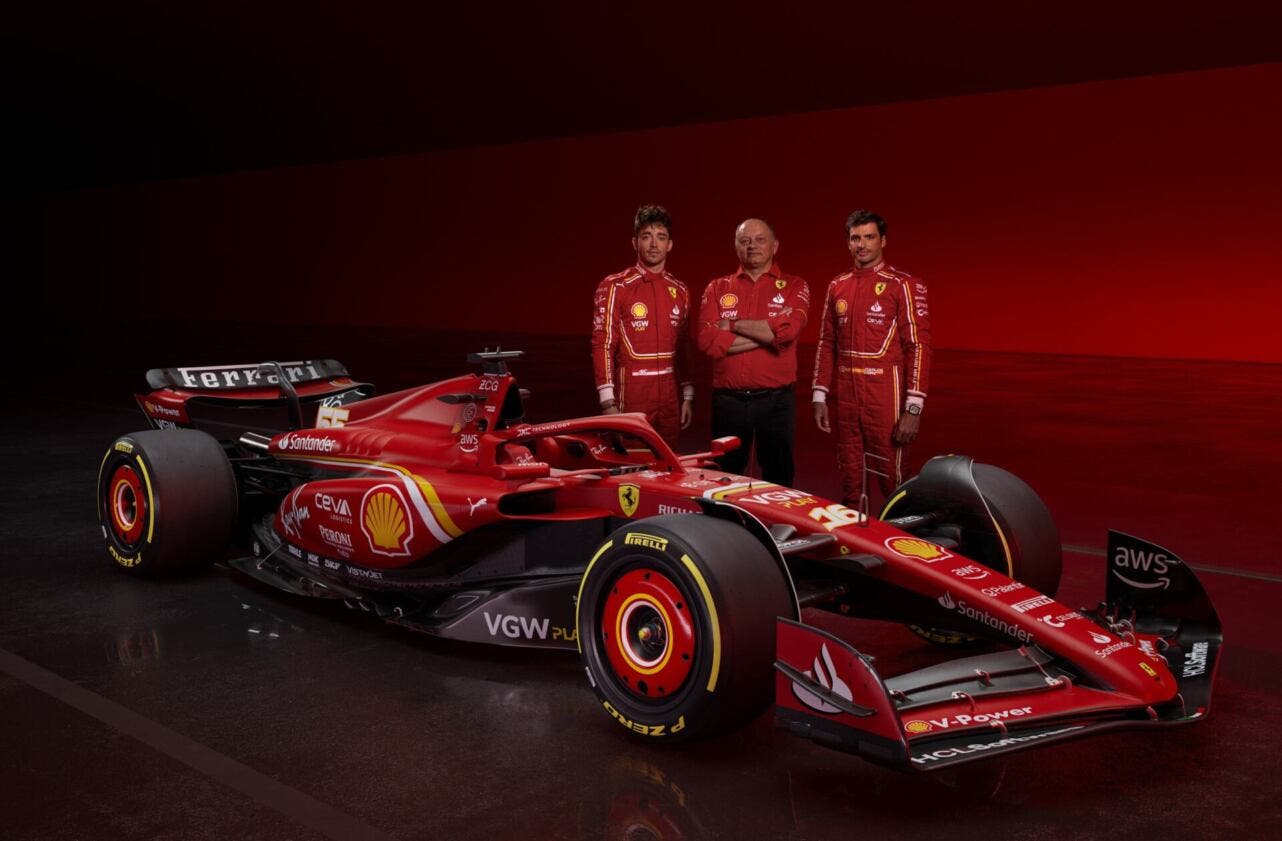
As for the power unit, it seems that those parts that could be modified according to the Federation’s dictates have been developed. The focus has been primarily on good weight saving in the order of one kilogram. According to Charles Leclerc, the new SF-24 performs well in the simulator, representing a significant step forward compared to last year’s single-seater. Sensations also confirmed by Carlos Sainz, in his last year at Maranello; starting from 2025, he will be replaced by Lewis Hamilton.

